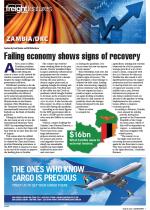Zambia is able to power up its SADC neighbours.Zambian utility ZESCO announced in July that the country had achieved an electricity generation surplus of 1 156 MW following the commissioning of 4x150 MW capacity from the 750-MW Kafue Gorge Lower Power Station. According to ZESCO managing director Victor Mapani, the installed national generation capacity stands at 3 456.8-MW against a peak national demand of approximately 2 300 MW. In contrast, South Africa’s installed capacity is 58 095 MW, with availability frequently dropping below demand.Mapani told a high-level panel discussion at an Association of Power Utilities of Africa (Apua) meeting in Dakar, Senegal that ZESCO was using internally generated resources to fund the Kafue Gorge project, which is due to be completed in November at a cost of $2.3 billion.“With this development, and factoring in independent power producers, we currently stand at a national generation installed capacity of 3 456.8 MW, against a peak national demand of approximately 2 300 MW. “We thus have a surplus of 1 156.8 MW that is available for trade within the interconnected SAPP (Southern African Power Pool) network,” he said.Power line projects being undertaken by ZESCO include one to connect to the Zimbabwe-Zambia-Botswana-Namibia (ZiZaBoNa) grid and a Zambia-Tanzania-Kenya (ZTK) interconnector. Existing lines include the Kariba 330kV lines to ZESA, Zimbabwe; the Sesheke-NamPower 220kV line to Namibia; the CEC 220kV lines to SNEL in the DRC; and the Kazungula-Kasane 66kV line to Botswana. Other regional transmission lines include cross-border power supplies – the Mafinga-ESCOM 33kV line with Malawi; the 33/11kV border supplies with SNEL (Democratic Republic of Congo); and the Mbala-Sumbawanga 66kV Line and Mbozi-Tunduma 33kV Line to Tanzania, according to ZESCO.

